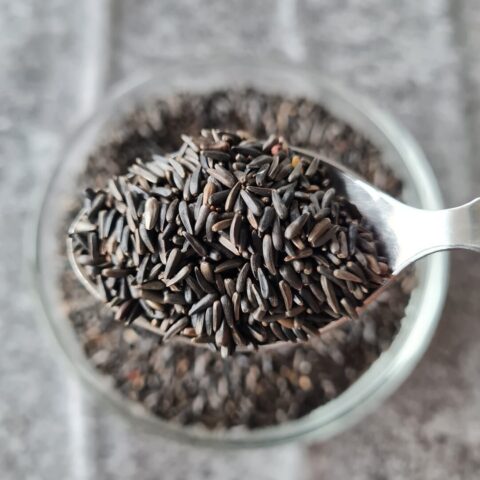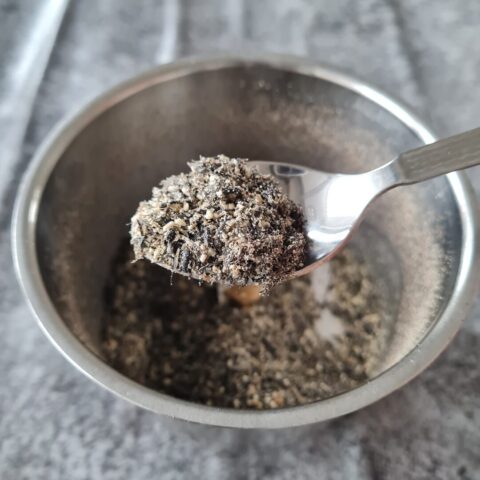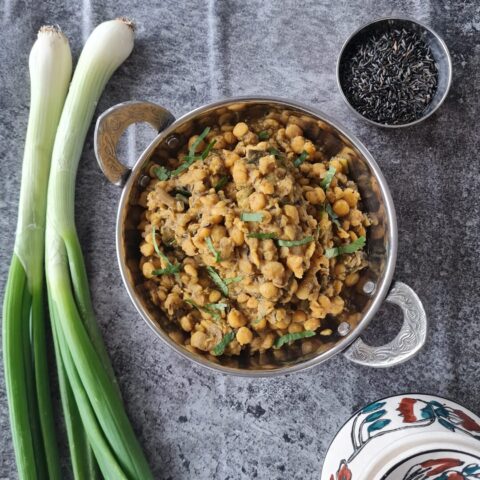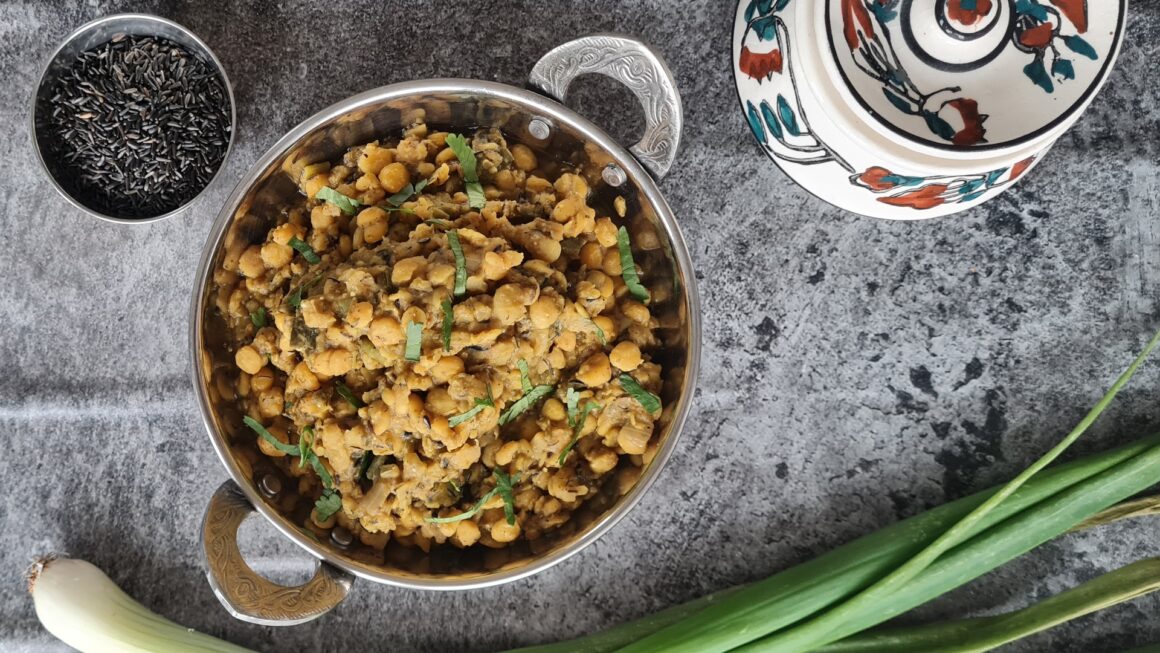I was born in a city called Solapur in Maharashtra. It’s on the border of Maharashtra, Karnataka and Andhra Pradesh. Solapur is renowned for its Shengadanya chi chutney, a dry peanut chutney that captures the essence of the region’s culinary style. However, this charming place offers much more than just this signature condiment; its cuisine is a delightful amalgamation of simplicity and earthiness, noticeably influenced by its neighboring states.
The brutal summers and the uncertain rainfall render this region a hot and dry place. Therefore, most cooking preparations are derived from raw ingredients with a long shelf life. Pendpala, a dish that I have fond memories of from my childhood, is a perfect example of such culinary adaptation. It’s simultaneously nourishing and fulfilling. Known as Ghuttbayli in Kannada, my grandmother tells me that this recipe originated from neighboring villages. In the summer, when there would be a scarcity of fresh vegetables, dishes like Pendpala would become a lifesaver.
The foundation of this dish is dal, but let me clarify – this recipe stands apart from your regular dal recipes. It’s remarkably flavorsome and packed with protein. Each bite will present you with a burst of taste derived from a distinctive ingredient incorporated into this dish.

Pendpala bears a similarity to Dal Kanda, a staple dish in Maharashtrian households. However, the distinguishing factor here is the addition of greens or vegetables, and uniquely, Karala ch kut – a powder made from roasted and ground Niger seeds. While the dry chutney made from these seeds, called Karala chi chutney, is commonly consumed, Pendpala is the only dish where Karal is included as a flavor-boosting ingredient. These minuscule Karal (Niger seeds) are nutrient-dense and rich in minerals, imparting a delightful nutty flavor to Pendpala.

Pendpala has many variants made using different types of dals. Some people prepare it solely using toor dal or masoor dal. The methods vary across households; some may include Gavar (cluster beans) or fenugreek leaves, while others may opt for dried leafy vegetables. In some regions, vegetables are not incorporated at all. I’ve also encountered dry versions of Pendpala, typically prepared when people are traveling and packing this dish for lunch. My personal preference leans towards the semi-dry version that my mother prepares.
For this recipe, a special spice blend called “Kala Masala” or “Kala Tikhat” is used. This blend is a staple in Solapuri households. Most vegetable or lentil dishes made at my mother’s house feature the addition of Goda Masala and a little sugar or jaggery (referred to as “Chaw“) to balance the flavors. Whenever my mother would cook this delectable Pendpala using Kala Masala, it felt like a treat. As it’s so distinct and delectable compared to regular dal, the kala masala imparts a slightly spicy kick, making it truly exceptional.
Another characteristic feature of this dish is the incorporation of Karala ch kut, a powder made from roasted and ground Niger seeds. While many relish the dry chutney derived from these seeds, known as Karala chi chutney, Pendpala stands out as the only dish in which Karal is utilized as a flavor-enhancing ingredient. These tiny, nutrient-packed seeds are abundant in minerals and infuse a delightful nutty flavor into the Pendpala.

Paired with Jowar bhakri, Pendpala becomes a complete dish. The experience is heightened if you pair it with crispy Solapuri Kadak bhakri. And don’t forget to serve some Fodlela Kanda on the side for a truly comforting meal.

Solapuri Pendpala
Ingredients
- Chana Dal: ¾ cup
- Yellow Mung Dal: 2 tbsp
- Toor Dal: ¼ cup
- Fenugreek Leaves: ½ cup
- Spring Onion: ¾ cup, chopped
- Onion: 1 medium
- Karalach Kut (Roasted Ground Niger Seeds): 4 tbsp
- Danyach Kut (Roasted Ground Peanuts): 2 tbsp
- Oil: 3 tbsp
- Mustard Seeds: ¼ tsp
- Cumin Seeds: ¼ tsp
- Turmeric: ¼ tsp
- Red Chilli Powder: 1 tsp
- Kala Masala (substitute in notes): 1 tbsp
- Garlic: 2 cloves, crushed
- Green Chilli (optional): 1
- Salt to taste
To Prepare Karalach Kut:
Ensure the Niger seeds are clean. Roast the seeds for a couple of minutes on low to medium heat. Once cooled, grind them coarsely.
To Prepare Danyach Kut:
Roast peanuts on a low to medium flame. Allow them to cool before grinding. The powder should be coarse, not fine.
To Cook Dals:
Wash and soak the three dals separately for 1-2 hours. Once they’ve soaked enough, drain the excess water. Bring water to a boil and add all three dals together. Allow the dals to cook thoroughly, but refrain from stirring excessively as we want to keep the dal intact. Cook on low to medium heat for 10-15 minutes. If any foam forms on top, discard it. The cooking time will depend on how long you’ve soaked the dal; the longer it’s soaked, the quicker it will cook. The dal should be cooked just enough to hold its shape, not turn mushy. Press the dal between two fingers to check if it’s cooked sufficiently. (See notes for an alternate method of cooking dal.)
Other Preparation:
Dice the onion to medium size. We want larger pieces, similar to those used for Kande Pohe. Chop the spring onion greens to a medium size. You may also use a spring onion bulb for cooking, if desired. Crush the garlic and green chilli in a mortar & pestle.
Tadka:
Begin the main tadka by heating oil in a saucepan. Once hot, add mustard seeds, cumin seeds, turmeric, and red chilli powder. Give a quick stir and lower the heat. Then, add the chopped fenugreek leaves and spring onion. Mix everything well. Add the diced onion, followed by the crushed garlic and green chilli. Let it cook for a few minutes, stirring occasionally. Once the onion and fenugreek leaves are well cooked, strain and add the dals to the tadka. Mix it well with the onion tadka, then cover and cook for a few more minutes. If the mix appears too dry, you can add some warm water or leftover stock from cooking the dal. Now, add the Kala Masala. If you don’t have it, you can substitute with either regular goda masala, kanda lasun masala, or garam masala. Next, add the Karalach Kut (ground niger seeds), followed by the Danyacha Kut (roasted ground peanuts), and finally, salt to taste. Stir everything well, then cook for a few more minutes. Check for consistency and switch off the flame once satisfied. Serve hot with Jowar bhakri (sorghum flatbread).
Notes:
- If fresh fenugreek leaves are unavailable, you can omit them or substitute with Kasuri Methi, the dried version.
- If you choose to add Kanda Lasun masala, there’s no need to add crushed garlic to the tadka, as it will make the dish too garlicky.
- You can make Pendpala using only one type of dal, like Toor dal or Chana dal.
- It is recommended to use a kadhai to prepare Pendpala.
- If you are a beginner, you can cook the dals in a pressure cooker. Just ensure the dals are not overcooked or mushy.
Watch this recipe here – Solapuri Pendpala

Kiran Inamdar is a mother to a toddler, a software engineer by profession, and a cooking enthusiast residing in the UK. Her culinary explorations are inspired by traditional Indian cuisine, yet she is always eager to learn more about British and European food.
As a working mother, she continually seeks out easy, yet nutritious recipes. Her learning journey has been enriching, as she strives to bring out authentic flavours using the ingredients readily available to her. Kiran began documenting her cooking journey to share her experiences, cultural knowledge and stories she’s amassed along the way.
Translations and detailed descriptions are provided to give a better understanding of the story to people from different cultural backgrounds across the globe.

